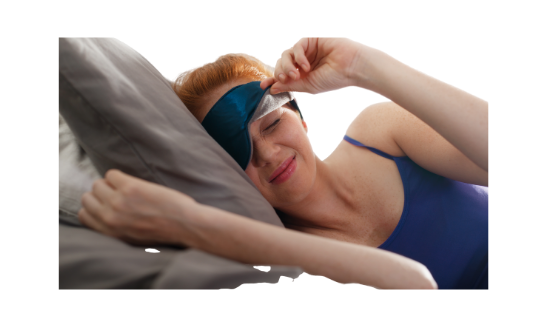Sleep Disorders
“Goodnight, sleep tight—don’t let the bedbugs bite.” Besides that being kind of gross to think of bugs in your bed! EEK!
The harsh reality is that few adults sleep tight. The National Sleep Foundation’s most recent Sleep Index study revealed that 35% of adults rated their sleep as “poor” or “fair,” and 25% reported that they did not wake up feeling refreshed at least once during the previous seven days. The CDC has even declared insufficient sleep a national health epidemic.
Unfortunately, for a portion of the nation, there isn’t an easy answer to getting a good night of sleep. These people suffer from a sleep disorder, which can range from something as common as insomnia to the more rare, like REM sleep behavior disorder. Below is a look at the eight most common disorders that plague adults.
INSOMNIA
Causes: High levels of stress; certain medications; anxiety or depression. Drugs or alcohol abuse. In the year 2019, people who suffer from a sleep disorder such as insomnia are on their smartphones and/or devices at times all night into the next day!
Symptoms: Difficulty falling asleep and then maintaining that sleep. While everyone has a bad night of sleep every so often, insomnia is a chronic issue, not acute. According to Dr. David Neubauer, an associate professor in the department of psychiatry at Johns Hopkins Medical Center, a person needs to suffer from insomnia symptoms for at least three months straight to be diagnosed with the disorder. If three weeks of little rest feels like hell, three months must feel like being stuck in hell’s rush-hour traffic.
Treatment: After a sleep study is conducted Cognitive behavioral therapy and/or medication are often prescribed.
Occurrence: About one-third of all Americans suffer from insomnia. “If you made a list of the most common sleep disorders in America, it would go something like insomnia, insomnia, insomnia, sleep apnea, insomnia, and then all the rest,” explains Neubauer.
SLEEP APNEA
Causes: A complete or partial blockage of the throat.
Symptoms: Daytime sleepiness, morning headaches, and—as any person who has attempted to sleep beside someone with apnea can attest—excessively loud snoring. Apnea may cause you to stop breathing multiple times per night. Oddly enough, most people who have apnea don’t realize there’s a problem until someone tells them. Bob Russo, an IT software project manager, was diagnosed with apnea 10 years ago. He only went to a specialist after his husband not-so-subtly informed Russo that he wasn’t getting sleep because of the snoring. “When you live with something for so long, it’s just normal when you wake up with a headache, or you fall asleep in a movie. But those are signs. So when I read the list I said ‘I guess I do have this.’ I thought I was resting and feeling well,” said Russo.
Treatment: The most common treatment for apnea is a CPAP (continuous positive airway pressure) machine, which keeps a person’s throat open via a steady stream of air.
Occurrence: About one in five adults suffer from at least a mild form of apnea.
RESTLESS LEG SYNDROME
Causes: Experts aren’t sure what causes RLS, but theorize that it’s hereditary. Medications have also been known to cause RLS. Pregnant women sometimes suffer from RLS.
Symptoms: An irresistible urge to move the limbs, not just legs. Often occurs in the evening or during periods of rest. Neubauer says that those who have RLS can kick or move hundreds of times a night, every single night.
Treatment: Regular exercise; reduction in caffeine and alcohol. For severe cases, medication can be prescribed.
Occurrence: About 10% of the population suffers from RLS. It’s more common in women.
REM SLEEP BEHAVIOR DISORDER
Causes: The mechanism in the brain that prevents motor movement while sleeping doesn’t function properly.
Symptoms: Sudden and intense movement during sleep. People with REM sleep behavior disorder have been known to thrash in bed, jump out of bed, and even tackle furniture that may or may not deserve it.
Treatment: First line of defense is to get a sleep study, medication is prescribed.
Occurrence: Extremely rare; less than one percent of the population.
5. NARCOLEPSY
Causes: Abnormalities in the parts of the brain that control REM sleep.
Symptoms: While people with narcolepsy can suddenly fall asleep at the most inopportune moments, most spend their days in a weird middle ground of sleep. They don’t have a differentiation between wide awake and sleeping, that this sleep disorder people are unable to stay awake during even the most stimulating environments, like Vacations, Loud Rock Concerts, Etc. Those with narcolepsy can also suffer from cataplexy, a condition that leads to fainting-like episodes brought on by emotional reactions to anything from a song to a joke.
Treatment: Medication is often advised.
Occurrence: Less than 200,000 adults are diagnosed per year.
SLEEPWALKING
Causes: Lack of sleep or inefficient sleep. Some medications. Illness or fever.
Symptoms: Walking while sleeping. Other signs are difficulty waking and abusing Danishes in the middle of the night. We’ve all heard the outlandish stories of people sleepwalking and be assured this is very scary and must be seen by the medical profession, or sleep disorder clinic!
Treatment: Reducing liquids near bedtime. A quiet sleep environment and maintaining a regular sleep schedule.
Occurrences: Other than tales of assaulting baked goods, an interesting aspect of sleepwalking is that it’s most common in children, and no one is quite sure why. Neubauer’s theory is that it has something to do with brain development. “There seems to be vulnerability when switching gears between deeper sleep and lighter levels of sleep,” he explains. “Almost like they slip gears and fall into sleep limbo.”
SLEEP TERRORS
Causes: Sleep deprivation, illness and/or, some medications.
Symptoms: Screaming and violent, short bursts of movement during sleep. When a person has a sleep terror episode they aren’t fully awake, therefore it can be extremely difficult to calm them down once they do wake up. Also, despite the name, sleep terrors and nightmares aren’t that similar. “Nightmares have an emotional narrative; sleep terrors are often simply a very crystallized notion of fear and danger,” explains Neubauer.
Treatment: Improve sleep environment, medication is given if the terrors are extreme.
Occurrences: Most commonly impacts children; few adults suffer from this disorder. Those with PTSD are more likely to suffer from sleep terrors.
BRUXISM (TEETH GRINDING)
Causes: Most experts blame excessive stress and anxiety.
Symptoms: Headaches and/or a sore jaw when waking in the morning. Complaints from annoyed bedmates.
Treatment: Avoiding chewing any items that aren’t food, as it trains the jaw to clench. Most people with bruxism end up getting fitted with a mouth guard that can be provided by a dentist.


